Scientific name Ravenala madagascariensis Rank Species | Genus RavenalaAdans. Higher classification Ravenala | |
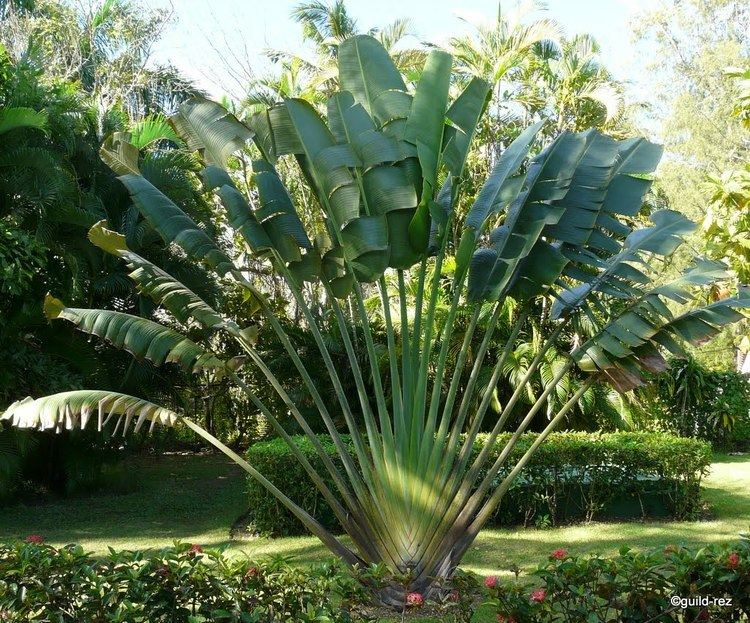 | ||
Similar Strelitziaceae, Bird of paradise flower, Strelitzia reginae, Bismarckia, Strelitzia nicolai | ||
Ravenala is a genus of flowering plants with a single species, Ravenala madagascariensis, commonly known as traveller's tree or traveller's palm, from Madagascar. It is not a true palm (family Arecaceae) but a member of a monocotyledonous flowering plant family, Strelitziaceae. The genus is closely related to the southern African genus Strelitzia and the South American genus Phenakospermum. Some older classifications include these genera in the banana family (Musaceae). Although it is usually considered to be a single species, four different forms have been distinguished.
Contents
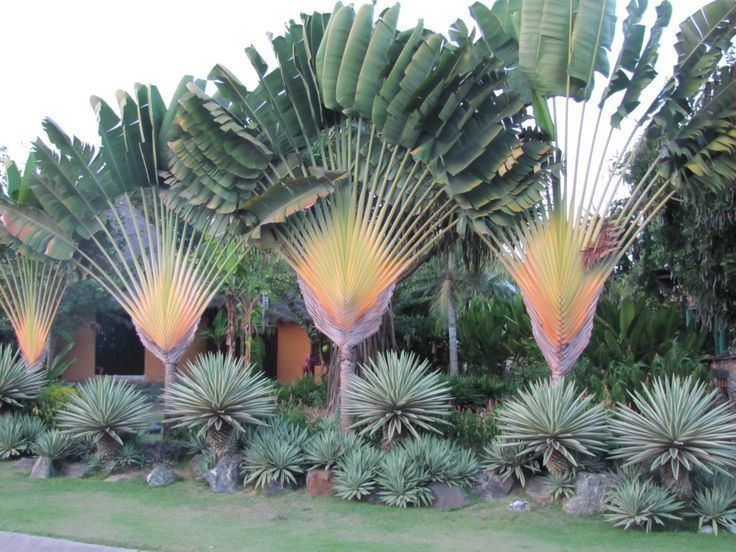
vlog mauritius the ravenala attitude
Name
It has been given the name "traveller's palm" because the sheaths of the stems hold rainwater, which supposedly could be used as an emergency drinking supply for needy travellers. However, the water inside the plant is murky, black and smelly and should not be consumed without purification. Another plausible reason for its name is that the fan tends to grow on an east-west line, providing a crude compass.
The scientific name Ravenala comes from Malagasy ravinala meaning "forest leaves".
Description
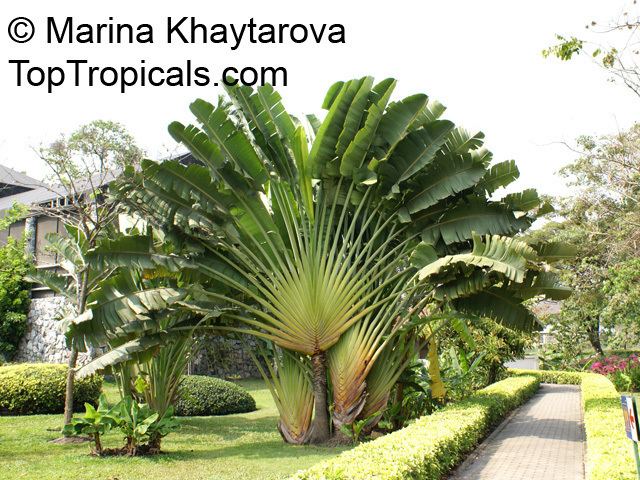
The enormous paddle-shaped leaves are borne on long petioles, in a distinctive fan shape aligned in a single plane. The large white flowers are structurally similar to those of its relatives, the bird-of-paradise flowers Strelitzia reginae and Strelitzia nicolai, but are generally considered less attractive, with a green bract. These flowers, upon being pollinated, produce brilliant blue seeds; possibly the only blue seeds found in nature. In tropical and subtropical regions, the plant is widely cultivated for its distinctive habit and foliage. As the plant grows older, it progressively loses the lowest or oldest leaves and reveals a sturdy grey trunk. Of the four forms, varieties or subspecies, the largest is the "Bemavo", from the hills of eastern Madagascar, which can be 100 feet (30 meters) in height with a trunk 2 feet (60 cm) thick. The foliar fan consists of 20 to 35 leaves, each as much as 36 feet (11 meters) in length.
Ecology
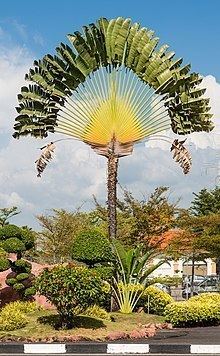
Ruffed lemurs are a known pollinator of this plant, and given the size and structure of the inflorescences, as well as the lemur's selectivity, method of feeding, and long muzzle, this relationship is thought to have coevolved.
Cultivation
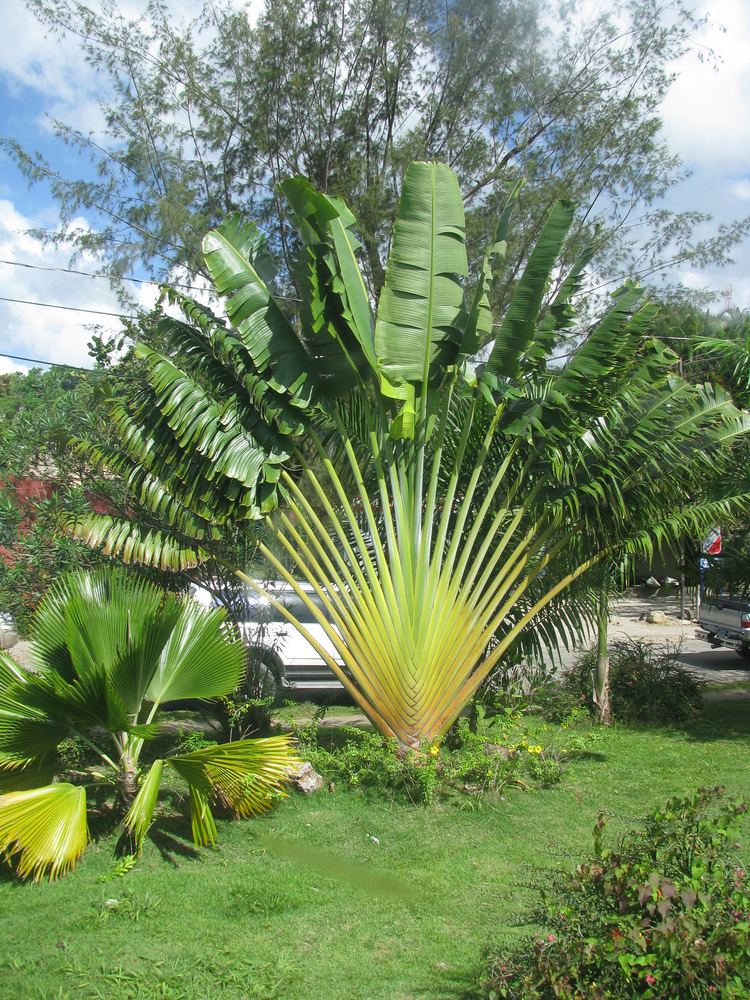
The plant requires a sunny spot (not full sun until it is larger). It responds well to fertiliser, especially if it is high in nitrogen during the growing season. This produces better growth and foliage. The plant grows to an average height of 7 m (23 ft) and requires moderate water.

